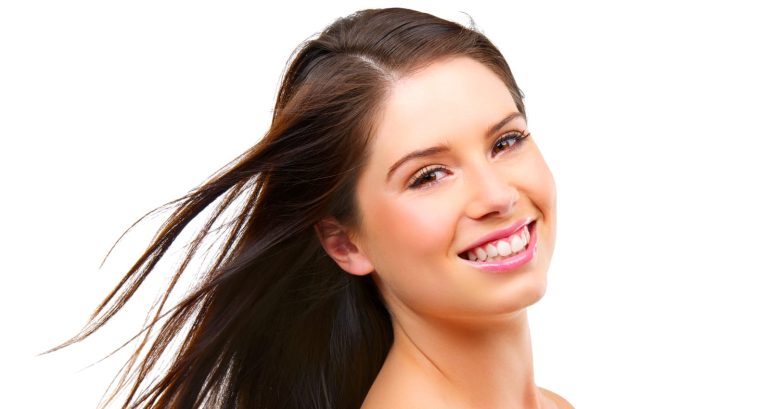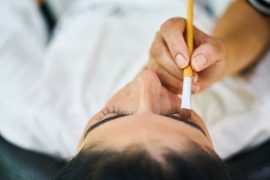By Klaus Ferlow, HMH,HA
It all started with Head Massage!
According to Wikipedia, the word “shampoo” dates back to 1762, being introduced in England via colonial India.
An Anglo-Indian word “shampoo” is derived from the Hindi “champo”, meaning “head massage.” “Champo is in turn is derived from the Sanskrit/Hindi word “champa, ” perhaps referring to the flowers of the plant, Michelia champa, which is traditionally been used to make fragrant hair oil.
The Indian treatment of champi (shampooing) or head massage was thought to be introduced in England by Bengali, Sake Dean Mahomet, who was the shampooing surgeon to both George IV and William IV.
It was in the 1900s that shampooing referred to washing hair with soap, and in Germany, where I am from, we used “Kernseife” which worked very well. In France people use the famous Savon De Marseille pur vegetal soap, made with 72% pure vegetable oil.
Our neem soap is medicinal and anti bacerial and should be used by people working with their hands in their profession and it also works very well on hot spots with dogs. A couple of washes and it stops the itching, irritating and scratchings.
Sometimes, depending what kind of soap was used, a dull film was left on the hair, making it uncomfortable, irritating, and unhealthy looking. By boiling shaved soap in water and adding herbs, hair could be given shine and fragrance. In India, using herbs such as neem,soapnut, fenugreek, buttermilk and aloe vera, have been used for thousands of years in different shampoos in the 1930s. Prior to that time,soap and shampoo, both being surfactants (a type of detergent), were used interchangeably.
Today, shampoo, surfactant when lathered with water, is used for the removal of oils, dirt, skin particles, dandruff, psoriasis, environmental pollutants etc. that gradually built in hair. Typically, there are shampoos for dry, normal, oily and problem hair. A good shampoo removes unwanted build-up without stripping out the natural oils (sebum) which lubricates the hair shaft so as to make the hair unmanageable. Avoid shampoos with toxic chemical ingredients!
Shampooing is usually followed by applying conditioners to increase the ease of combing and styling. One of our best selling shampoos is the herbal neem shampoo and the feed back from people suggest that it prevents hair loss and even creates hair growth!
Why choose herbal shampoo?
Today herbal shampoos are available without dangerous, hazardous toxic chemicals. please read the labels, found in commercial products such as SLS sodium laurel and laureth sulphate, phosphates, artificial colors and scents, coal tar, nitrosamines, methylisothiazoline (MT), paraben preservatives (butyl, ethyl, methyl, propyl) and other toxic ingredients.
No wonder some of the most frequent complaints made to Health Canada and i FDA are about scalp and eye irritation, hair loss and hair damage caused by toxic chemicals. Coloring your hair with black and dark brown color can create hair loss and even brain tumor! Natural health store retailers and practitioners should educate their customers to read the ingredients on the labels and avoid recommending these unhealthy products .
A good natural herbal shampoo should have the following qualities:
good finish after washing the hair, easy rinsing with nettle or neem tea, minimal or no skin/eye irritation, no damage to the hair and scalp, leaves hair feeling silky soft and shiny, pleasant smell, only genuine essential oils should be used such as rosemary oil, and no synthetic fragrance oils, and be slightly acid (pH less than 7), to minimize breaking the disulfide bonds in the hair keratin.
Hair consists primarily of protein so for healthy hair with bounce and a glowing shine, brush also your hair daily, adequate amounts of protein to maintain and built new tissues in the body and new hair follicles is needed. Good sources include eggs, poultry, fish, meat, legumes, nuts and dairy products.
A deficiency of these nutrients will be reflected in the condition of both hair and scalp. Scalp massage and brushing to stimulate the sebaceous glands and to distribute the hair’s natural oils is also recommended.
I attended as Keynote speaker the WNO NEEM SUMMIT in New Delhi, India, https”//vitalitymagazine.com/wno-neem-summit-2024-success/
Klaus Ferlow, HMH, HA, author, formulator, lecturer, researcher, writer and founder of Ferlow Botanicals and NEEM RESEARCH, Roberts Creek, B.C., Canada, https://neemresearch.ca, www.worldneemorganisation.org, https://www.ferlowbotanicals.com






